New Mars Forums
You are not logged in.
- Topics: Active | Unanswered
Announcement
#1 2024-05-28 12:31:13
- tahanson43206
- Moderator
- Registered: 2018-04-27
- Posts: 22,416
Architecture for Sea Level Rise on Earth
There is a high probability that all ice on Earth will melt due to a combination of factors.
If all ice on Earth melts, humans who live on land that is currently above sea level can adapt by raising structures above rising water.
I decided to ask Google what architects are thinking about this possible future, and learned that quite a bit seems to be going on.
MVRDV: Possible urban planning solutions for sea level rise
Topos Magazine
https://toposmagazine.com › sea-level-rise-mvrdv
Mar 1, 2023 — Dutch architecture studio MVRDV has released a study aiming to offer solutions to urban planning in the face of rising sea levels. This study ...Six student projects that respond to rising sea levels and ...
Dezeen
https://www.dezeen.com › 2022/10/21 › student-project...
Oct 21, 2022 — We've rounded up six student projects presented on Dezeen School Shows that aim to offer design solutions to rising sea levels and flooding.Buildings Prepared for Sea Level Rise
ULI Developing Urban Resilience
https://developingresilience.uli.org › themes › buildings-...
This collection highlights best practices in preparing for and mitigating the impacts of rising seas. Briefs provide an overview of resilient design strategies, ...10 Architectural Schemes That Could Help Us Adapt To ...
Smithsonian Magazine
https://www.smithsonianmag.com › innovation › 10-arc...
Oct 14, 2014 — 10 Architectural Schemes That Could Help Us Adapt To Rising Seas · Water-Based Urban Development, by DeltaSync · Floating City, by AT Design ...People also ask
How do you design sea level rise?
What is sea level in architecture?
What can architects do for climate change?
What are 5 ways landscape architects can influence climate change?
FeedbackAn Architect's Toolkit: Waikiki and Future Sea-level Rise
Hawaii Sea Grant
https://seagrant.soest.hawaii.edu › 2022/03/09 › an-arch...
Mar 9, 2022 — Architects are responsible for keeping the balance between the science (in this case, sea-level rise) and the graphic representation of an idea.Getting Real About Sea Level Rise: Landscape Architecture ...
American Society of Landscape Architects
https://dirt.asla.org › 2021/08/04 › getting-real-about-sea...
Aug 4, 2021 — “Landscape architects bring nature-based solutions to where people live – to their streets, parks, plazas, and recreational areas. With Dr.Design for Rising Sea Levels
Harvard Design Magazine
https://www.harvarddesignmagazine.org › articles › desi...
Most design thinking for coastal protection explores options in the vertical plane: walls, mechanical barrier arms, levees, and houses on stilts. The ...Adapting Cities to Sea Level Rise: Green and Gray Strategies
stefanal.com
https://www.stefanal.com › adapting-cities-to-sea-level-r...
Adapting Cities to Sea Level Rise, by infrastructure expert Stefan Al, introduces design responses to sea-level rise, drawing from examples around the globe.Landscape Architecture for Sea Level Rise - Book
laforsealevelrise.com
https://laforsealevelrise.com
This book assesses and illustrates innovative and practical world-wide measures for combating sea level rise from the profession of landscape architecture.
About the Book · Editors · Case Locations · MechanismsMVRDV creates a "Sea Level Rise Catalogue" to adapt ...
World Architecture Community
https://worldarchitecture.org › article-links › enfmn › m...
Nov 17, 2022 — The Sea Level Rise Catalogue provides various examples for both adapting existing buildings and its surroundings, developing new structures with ...
Related searches
In another topic, Calliban recently suggested building on pylons. If this is done before water arrives, then the buildings can be cranked up the pylons as the water levels rise. The pylons themselves would be set in bedrock or the concrete equivalent well ahead of the incoming oceans.
(th)
Offline
Like button can go here
#2 2024-05-28 12:33:26
- tahanson43206
- Moderator
- Registered: 2018-04-27
- Posts: 22,416
Re: Architecture for Sea Level Rise on Earth
This post is reserved for an index to posts NewMars members may contribute over time.
(th)
Offline
Like button can go here
#3 2024-05-28 13:37:15
- Mars_B4_Moon
- Member
- Registered: 2006-03-23
- Posts: 9,776
Re: Architecture for Sea Level Rise on Earth
Study predicts more long-term sea level rise from Greenland ice
https://sealevel.nasa.gov/news/167/stud … enland-ice
study found that the entire Greenland Ice Sheet will likely melt in a millennium, causing 17 to 23 feet (5 to 7 meters) of sea level rise.
more alarmist 170 m
from a BBC science website
Modelling work led from the University of Sydney, Australia also taking data from the Cretaceous Period.
https://www.imgbly.com/ib/hPfWOsC7QB.gif
a drop of 120 m with more snow but also new land available, Australian's might be able to walk to Asia while Scotland England seems to join with Norway Sweden.
https://www.imgbly.com/ib/GQF4aq2jtb.gif
Last edited by Mars_B4_Moon (2024-05-28 13:38:55)
Offline
Like button can go here
#4 2024-06-01 11:53:45
- tahanson43206
- Moderator
- Registered: 2018-04-27
- Posts: 22,416
Re: Architecture for Sea Level Rise on Earth
This post is about evacuation of a small island off the coast of Panama.
While the bulk of the population will move to a new accommodation in the forest, a few will remain on the island as long as they can.
With the title of this topic in mind,it seems to me this is an opportunity for adventurous architects to work with an actual site to try out raised structures and other adaptations to rising sea levels.
An option that might appeal to some is an elevator platform that would rest at sea level when conditions permit, but which would lift above the waves when necessary.
https://www.yahoo.com/news/panama-prepa … 00223.html
Panama prepares to evacuate first island in face of rising sea levels
MATÍAS DELACROIX and JUAN ZAMORANO
Updated Sat, June 1, 2024 at 12:18 PM EDT·5 min read
158
and ...
GARDI SUGDUB, Panama (AP) — On a tiny island off Panama’s Caribbean coast, about 300 families are packing their belongings in preparation for a dramatic change. Generations of Gunas who have grown up on Gardi Sugdub in a life dedicated to the sea and tourism will trade that next week for the mainland’s solid ground.
They go voluntarily — sort of.
The Gunas of Gardi Sugdub are the first of 63 communities along Panama’s Caribbean and Pacific coasts that government officials and scientists expect to be forced to relocate by rising sea levels in the coming decades.
The first response of the government of Panama seems to have been to move the population inland. That is probably less expensive than trying to find a solution that would allow continued living on the island.
(th)
Offline
Like button can go here
#5 2024-06-01 14:27:11
- SpaceNut
- Administrator
- From: New Hampshire
- Registered: 2004-07-22
- Posts: 29,604
Re: Architecture for Sea Level Rise on Earth
We have had another chunk of ICE brake off the ice shelf of Antartica to which it will not be3 the last as we continue to have temperatures rise.
Future sea levels through 2100
Even teh everglases will disappear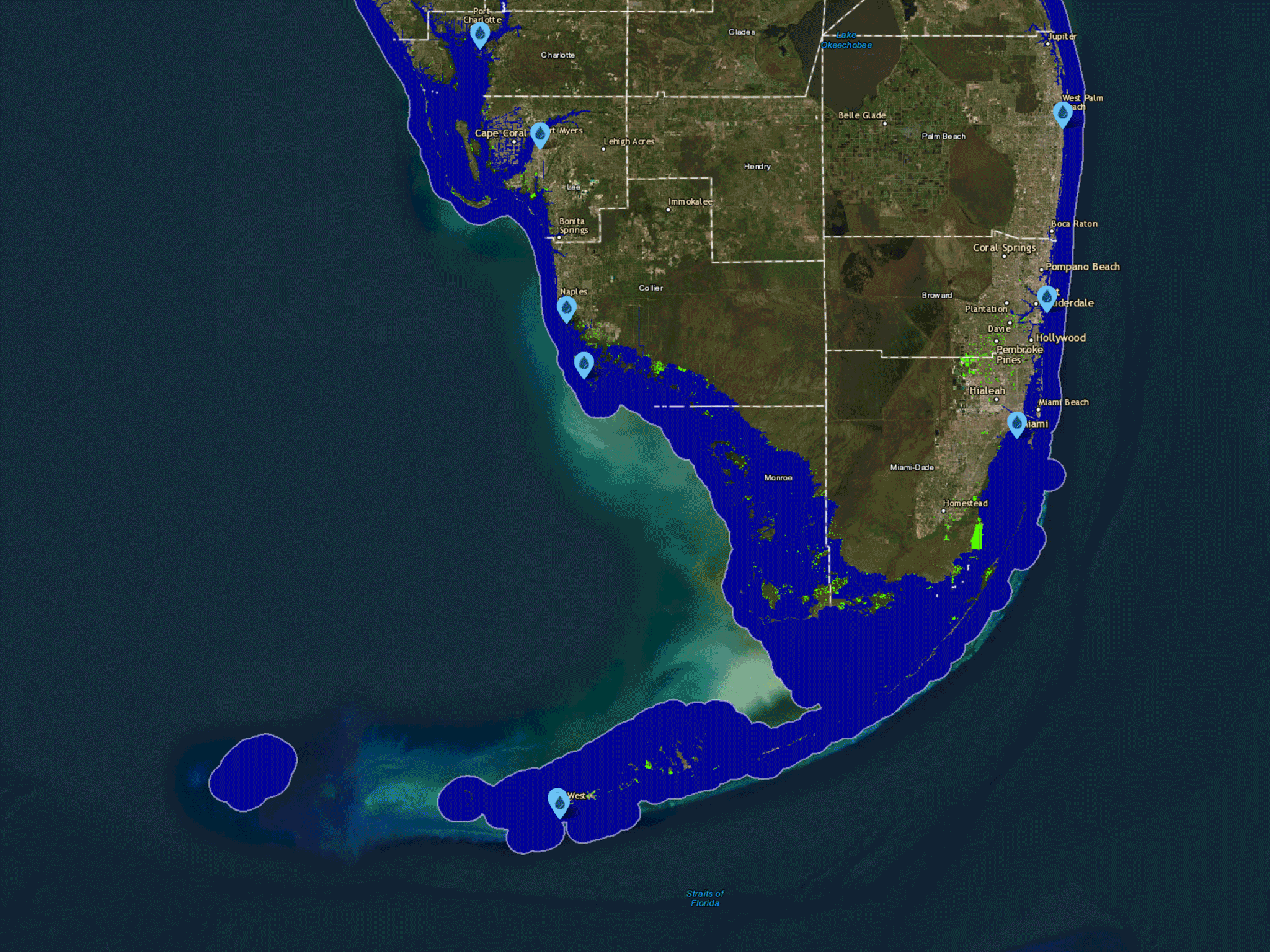
Venice attempts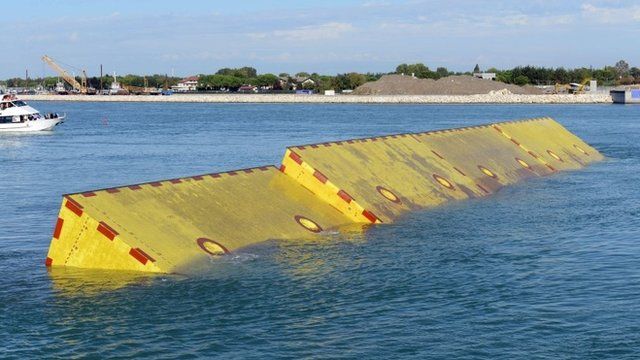
Offline
Like button can go here
#6 2024-06-01 17:02:17
- RobertDyck
- Moderator
- From: Winnipeg, Canada
- Registered: 2002-08-20
- Posts: 8,231
- Website
Re: Architecture for Sea Level Rise on Earth
Intermal database error
Offline
Like button can go here
#7 2024-06-01 17:14:04
- SpaceNut
- Administrator
- From: New Hampshire
- Registered: 2004-07-22
- Posts: 29,604
Re: Architecture for Sea Level Rise on Earth
try each line in the post response until you find the line that is whining.
The Us has many oceans front waters that will be below if it keeps rising.
Maryland Map Shows Where State Could Be Underwater From Sea Level Rise
Panama prepares to evacuate first island in face of rising sea levels
Every year, especially when the strong winds whip up the sea in November and December, water fills the streets and enters the homes. Climate change isn't only leading to a rise in sea levels, but it's also warming oceans and thereby powering stronger storms.
The Gunas have tried to reinforce the island’s edge with rocks, pilings and coral, but seawater keeps coming.
Offline
Like button can go here
#8 2024-06-01 17:22:34
- tahanson43206
- Moderator
- Registered: 2018-04-27
- Posts: 22,416
Re: Architecture for Sea Level Rise on Earth
For RobertDyck...if you can, please try your post in the clone.
I have so far found that every single AISE that NewMars Prime complains about is accepted by the clone.
I do not recognize the text you posted. Please try that post on the clone and let us know what happens.
(th)
Offline
Like button can go here
#9 2024-06-01 17:33:12
- SpaceNut
- Administrator
- From: New Hampshire
- Registered: 2004-07-22
- Posts: 29,604
Re: Architecture for Sea Level Rise on Earth
Now back to the resources required and types.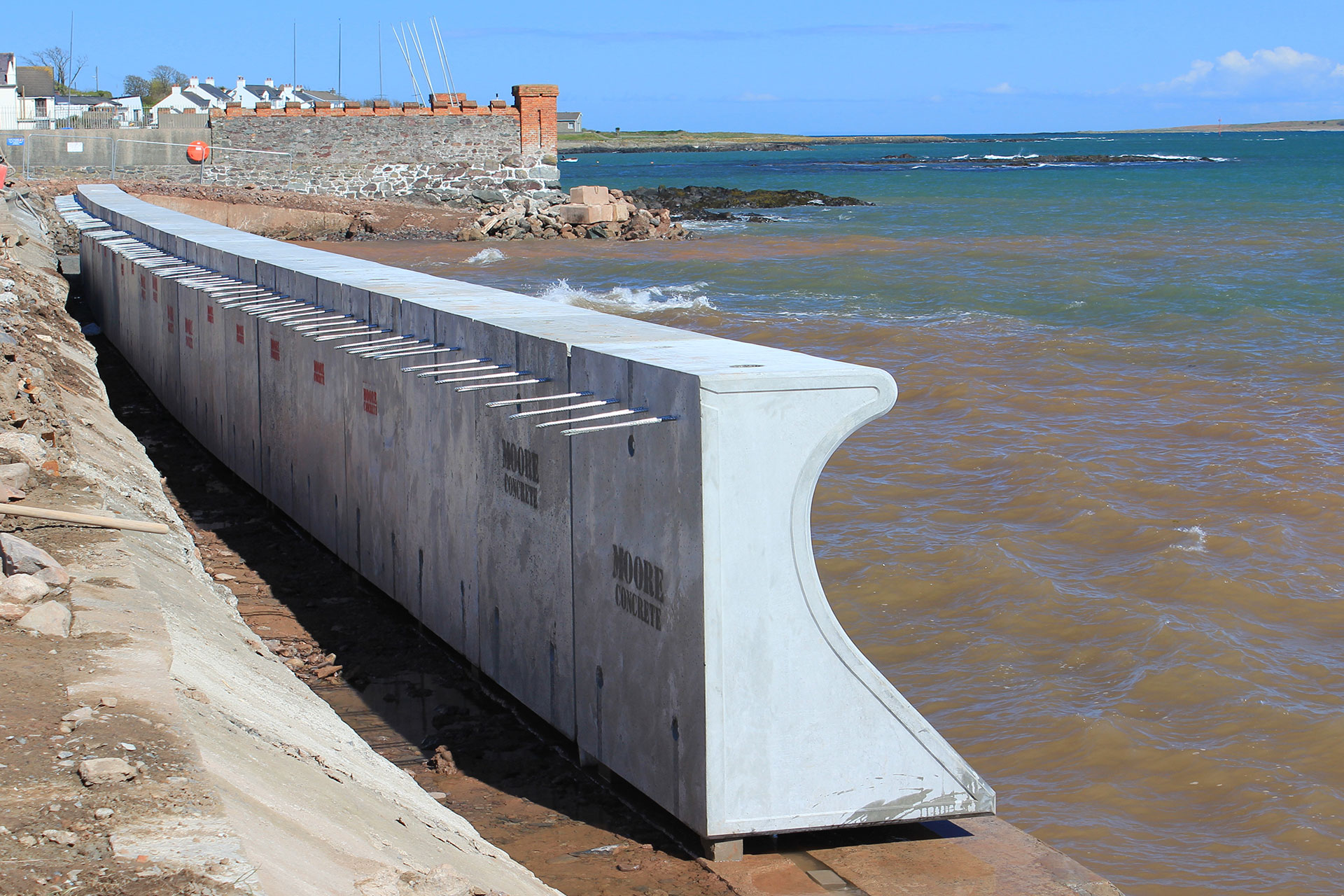
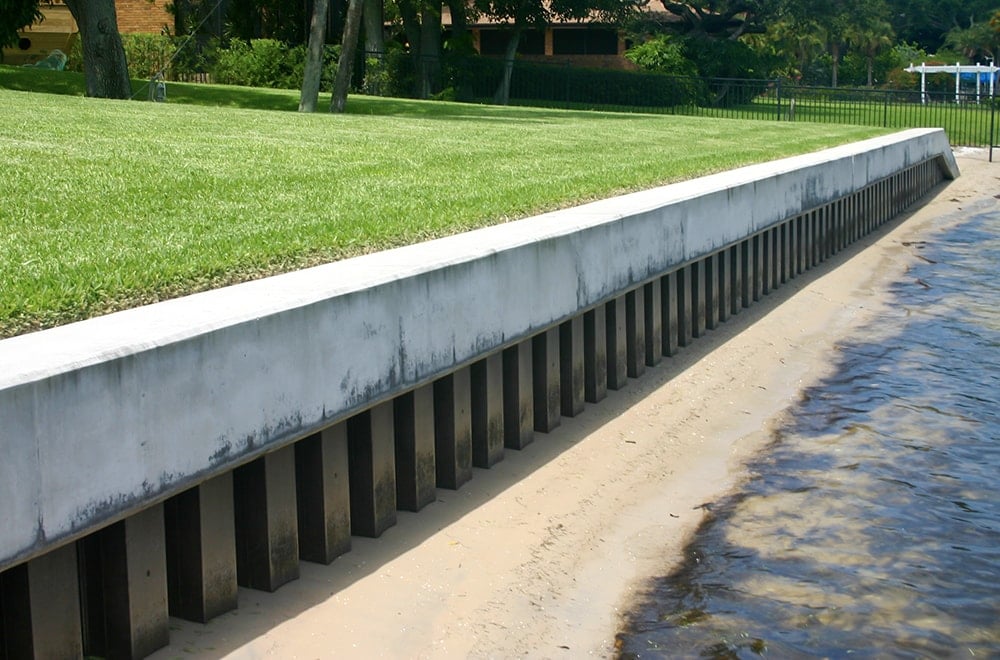
nice green lawn.
Normally pile is set then the wall is created.
Offline
Like button can go here
#10 2024-06-01 17:34:07
- tahanson43206
- Moderator
- Registered: 2018-04-27
- Posts: 22,416
Re: Architecture for Sea Level Rise on Earth
For SpaceNut re contributinns showing where flooding is likely!
Thanks for these maps. They show where capitalists can allocate funds to provide a useful service in return for fair compensation.
This topic is set up to provide (or at least point to) solutions. This topic is NOT about whether climate change will occur or how soon. This topic is about how astute business people can identify opportunity and prepare to take advantage.
I understand that not everyone has the background or even an interest in entrepreneurship. This topic may be of interest to readers in general, but I am hoping we attract the young people who are going to be leading the project teams to create safe and comfortable living accommodations for folks who want to live in the new coastal areas that appear likely to become available.
The regions of interest will not be far under the surface unless all the glaciers melt. Instead, they will be similar to existing coastal regions, where tides occasionally cover everything briefly, or hurricanes sweep onshore and cause damage.
The housing architecture that is needed is already showing up here and there. There are two basic strategies that seem likely (to me at least) ... One is the pillar concept that Calliban suggested. The other is the submarine method, which is perfectly feasible, since submarines have shown how to tuck under the waves to stay out of the turbulence. All solutions will require investment of time, energy and money, but the opportunity to live in the soon-to-become-available coastal regions will justify the investment.
(th)
Offline
Like button can go here
#11 2024-06-01 17:35:15
- RobertDyck
- Moderator
- From: Winnipeg, Canada
- Registered: 2002-08-20
- Posts: 8,231
- Website
Re: Architecture for Sea Level Rise on Earth
We hear politicians say talk about "fighting sea level rise", so I want to post some facts.
Post glacial sea level rise. This shows sea.level has risen continuously for the last 20,000 years. Most people have heard that ancestors of aboriginal people in the Americas walked across the Bering sea land bridge. The land has been called Beringia. It flooded due to sea level rise as ice from the ice age melted. What most people don't realize is that sea level rise never stopped. Glaciers are left-overs from the ice age and are still melting.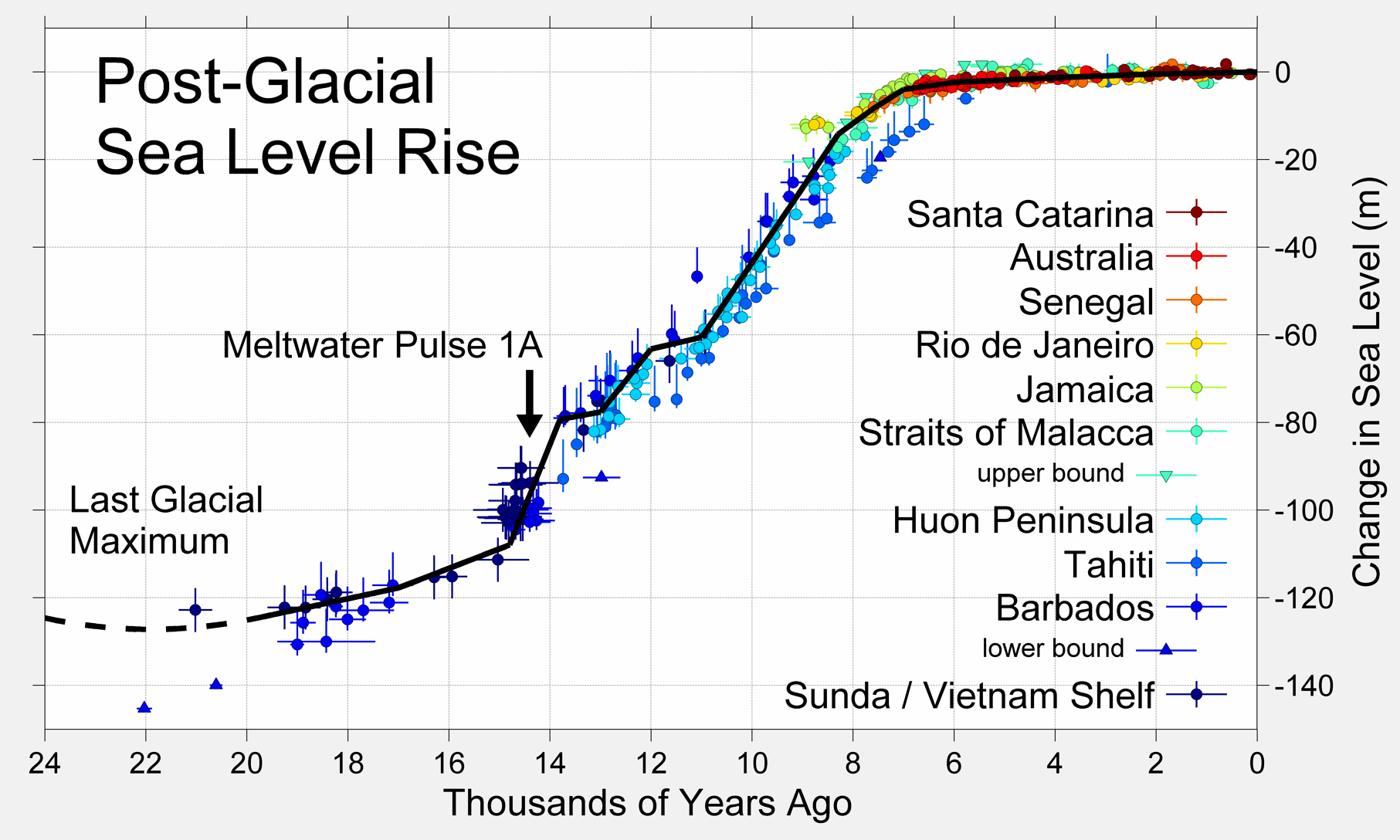
Several Roman ports and coastal cities are under water. This is due to sea level rise. Olbia off the Mediterranean coast of France, Baiae on the northwest short of the Gulf of Naples, a Roman port off the coast of Portorož Slovenia.
Today sea level rise has been measured by a US federal agency called National Oceanographic and Atmospheric Agency (NOAA). It's been measured since 1993, and is very steady. It isn't increasing nor decreasing. It's 3.2 millimetres per year. It varies from 3.1 to 3.3, but averages to 3.2 with no change in trend. That's 3.2 cm per decade or 9.6 cm (3 3/4 inches) over the next 3 decades. Between 2024 and 2101 (the start of the next century) sea level will rise by 3.2 x 246.4 mm. Rounding off to 2 significant figures that's 1/4 metre or 9.7 inches. We can adjust ports.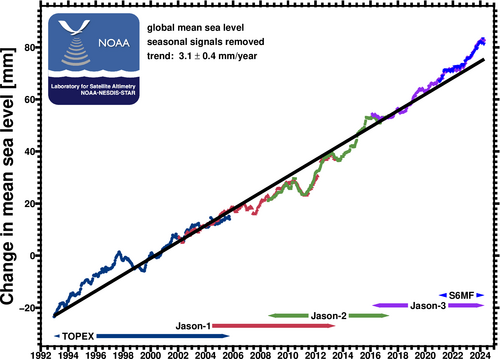
The coast of Nova Scotia in Canada has another problem: ground subsidence. The tecktonic plate is subsiding. During the last ice age, Canada was covered by ice kilometres deep. Over southern Manitoba where I live it was 10 km deep. That weight pressed the tecktonic plate down into the mantle. But as a person lying on a foam pad floating in a swimming pool, the weight caused the centre to subside but the edges to flip up. Now that the ice is gone, the tecktonic plate is rebounding. In southern Manitoba it has finished but northern Manitoba is still rebounding. Thousands of years from now, the Red River will reverse water flow. But the edge of the continental plate flipped up. Today the edges are subsiding down. The west coast is anchored by the Rocky Mountains, but the coast of Nova Scotia is subsiding. It's sinking at 10 to 15 cm per century. If we use the higher figure, over the next 77 years that's 11.55 cm. Add to sea level rise and coastal waters will rise by 36 cm (0.36 metres). One individual is going to town councils show what would happen with sea level rise by 3 metres. That's exaggeration by roughly 10 times.
Research Nova Scotia
Offline
Like button can go here
#12 2024-06-01 17:53:32
- SpaceNut
- Administrator
- From: New Hampshire
- Registered: 2004-07-22
- Posts: 29,604
Re: Architecture for Sea Level Rise on Earth
For a business one must have a state, town or city and last but least the landowner willing to pay the price to keep what they own from vanishing.
Building a seawall costs $25,000 on average, with a wide range between $10,000 and $100,000, depending on the size and type of seawall.
https://www.angi.com/articles/how-much- … eawall.htm
$150 – $600 seawall cost per linear foot
$15,000 – $60,000 Average cost to build 100’ seawall
Materials wood, steel, concrete and even others...
Offline
Like button can go here
#13 2024-06-01 18:01:40
- tahanson43206
- Moderator
- Registered: 2018-04-27
- Posts: 22,416
Re: Architecture for Sea Level Rise on Earth
For RobertDyck re Post #11
Thank you for this interesting and timely addition to the collection.
This topic is intended to hold posts about how to prepare buildings for sea level rise.
Your post reminds us that there will be subsidence in some areas, which implies to me that if the regions of concern are near sea level today, they will be below sea level tomorrow, even if the sea were not rising.
The figures you cited that came from NOAA are highly likely to be correct. The historical record certainly needs to be taken into account. The issue at hand is that glaciers are (apparently/reportedly) melting faster than had been expected.
Please continue adding helpful data to this topic as it comes to your attention. I doubt you're going to find much good news based upon current observations, but you might, and if you do it would be welcome.
(th)
Offline
Like button can go here
#14 2024-06-01 18:02:58
- RobertDyck
- Moderator
- From: Winnipeg, Canada
- Registered: 2002-08-20
- Posts: 8,231
- Website
Re: Architecture for Sea Level Rise on Earth
Yes, low lying areas have to deal with sea level rise somehow. Holland has used dykes to hold back the ocean, reclaim some of the land lost to sea level rise. Whether it is reclaimed or gained depends on how long you look at history. Doggerland submerged about 6,500 BC. That's 8,500 years ago, plus or minus a century. You could use dykes, or relocate people inland, or some other strategy.
Canada is dealing with a federal government obsessed about carbon emissions. As if reducing carbon emissions in Canada alone will somehow stop global climate change. Our economy is destroyed. I'm not arguing for doing nothing, but am arguing for learning the actual science before creating government policy, and NOT listening to political activists. At this point I could spout a long stream of expletives for political activists.
Offline
Like button can go here
#15 2024-06-01 18:06:46
- tahanson43206
- Moderator
- Registered: 2018-04-27
- Posts: 22,416
Re: Architecture for Sea Level Rise on Earth
For RobertDyck ... here is some good news/ bad news ...
The good news is that it appears Venezuela will not be contributing to sea level rise.
The bad news is that Venezuela no longer has any glaciers...
Scientists believe its disappearance makes Venezuela the first country in the Americas — and the first country in modern history — to lose all its glaciers.May 25, 2024
'A great sadness': Venezuela is first Andean country to lose all ...
NBC News
https://www.nbcnews.com › news › latino ›
About featured snippets
(th)
Offline
Like button can go here
#16 2024-06-01 18:20:20
- RobertDyck
- Moderator
- From: Winnipeg, Canada
- Registered: 2002-08-20
- Posts: 8,231
- Website
Re: Architecture for Sea Level Rise on Earth
Note: according to ancient Egyptian documents, their ancestors lived on an island in the Mediterranean. That island sunk. They moved to the mainland. The island was not Atlantis, it was a different island. Some people pointed out the oldest stone buildings and monuments seem to be built using very advanced stone working techniques, and those techniques gradually got more primitive over time. That's backwards to what you would think. So people must have developed stone working technology very long ago, longer than traditional history records. Oldest records do support that conclusion; that history is far older than most people believe. But this discussion is about sea level rise. My point is ancient Egyptians dealt with flooding of their island, their world, by moving to a completely different location. Today we think of Egyptians as living and belonging to the Nile river. But they didn't originate there, they moved there after their island was flooded. They brought advanced stone working technology, and we don't know how many other technologies with them. Agriculture? Göbekli Tepe in what is now Turkey was occupied between 9,500 BC and 8,000 BC. That's what we know. It was buried, and we can carbon date the soil with which it was buried. We don't actually know when it was built. There is a field within walking distance of Göbekli Tepe that has evidence of wheat carbon dated to 22,000 years ago. And that isn't the oldest wheat. There is evidence of wheat in the Levant carbon dated to 26,000 years ago. So history is a lot older than most people think. But back to sea level rise. Ancient Egyptians moved from an island to the mainland, are now associated with the Nile river. Others may have to permanently move as well.
Offline
Like button can go here
#17 2024-06-01 18:33:54
- tahanson43206
- Moderator
- Registered: 2018-04-27
- Posts: 22,416
Re: Architecture for Sea Level Rise on Earth
This is a follow up to RobertDyck's interesting and timely report on sea level rise since the last ice age ...
This site features a map that shows flooding that can be expected for various levels of sea level rise.
The map shows Canada and nations South of the US, but the animation does not appear to include them.
The map does include focus on selected islands;
This next quote from NOAA may be more useful:
People also ask
What is the projected sea level rise for NOAA?
2022 Sea Level Rise Technical Report
Sea level along the U.S. coastline is projected to rise, on average, 10 - 12 inches (0.25 - 0.30 meters) in the next 30 years (2020 - 2050), which will be as much as the rise measured over the last 100 years (1920 - 2020).
The predictions of any government agency, or private one for that matter, are open to amendment if inputs change.
The rate of melting of glaciers would (presumably) show up as changes of projections of sea level rise.
Most predictions that I found in scanning Google's collection seem to show about a foot of sea level rise along the East coast of the US in the next 30 years. However, that's the average.
Hurricanes and high tides will raise water levels temporarily.
It seems to me a prudent property owner in areas subject to flooding would take precautions.
It appears that many folks ** are ** planning ahead.
(th)
Offline
Like button can go here
#18 2024-06-02 17:49:13
- SpaceNut
- Administrator
- From: New Hampshire
- Registered: 2004-07-22
- Posts: 29,604
Re: Architecture for Sea Level Rise on Earth
A recent report highlights that since 2010, the Gulf of Mexico has seen sea levels rise at twice the global average rate. Tide gauges from Texas to North Carolina show sea levels at least six inches higher than 14 years ago.
Offline
Like button can go here
#19 2024-06-03 19:06:36
- SpaceNut
- Administrator
- From: New Hampshire
- Registered: 2004-07-22
- Posts: 29,604
Re: Architecture for Sea Level Rise on Earth
Massachusetts Map Shows Where State Could Be Underwater From Sea Level Rise
Massachusetts' coastal areas, span over 1,500 miles,
Offline
Like button can go here
#20 2024-06-12 17:29:29
- SpaceNut
- Administrator
- From: New Hampshire
- Registered: 2004-07-22
- Posts: 29,604
Re: Architecture for Sea Level Rise on Earth
Offline
Like button can go here
#21 2024-10-13 06:42:39
- tahanson43206
- Moderator
- Registered: 2018-04-27
- Posts: 22,416
Re: Architecture for Sea Level Rise on Earth
The recent hurricanes that devastated Florida in the US tested but did not break the homes in a purpose-built community...
This article was reported by Yahoo and it may have originated on CNN:
As parts of Florida went dark from Helene and Milton, the lights stayed on in this net-zero, storm-proof community
Rachel Ramirez, CNN
Sat, October 12, 2024 at 10:58 PM EDT·6 min read
574William Fulford moved from Virginia Beach, Virginia, to a new waterfront development in Florida in 2023. Nestled between Sarasota Bay and the southwestern part of Tampa Bay, the new home by Bradenton Beach was everything Fulford, a retired custom homebuilder, ever wished for.
The developers of the new Hunters Point community, Pearl Homes, billed the property as the first “net-zero” single-family home development in the US, meaning residents produce more energy from solar panels than they need, with the excess energy either being stored or sold back to the grid – in a state where most electricity is generated by burning natural gas, a planet-warming fossil fuel.
They also boast some of the most sustainable, energy-efficient and hurricane-proof homes in the country: The streets surrounding the homes are intentionally designed to flood so houses don’t. Power and internet lines are buried to avoid wind damage. The sturdy concrete walls, hurricane-proof windows and doors are fortified with a layer of foam insulation, providing extra safety against the most violent storms.
Climate resiliency and storm protection were built into the fabric of the homes. And while the newly developed homes have endured a few storms since people moved in around February 2023, Hurricanes Helene and Milton put those features to the true test over the last two weeks.
Most of the residents living in Hunters Point heeded the mandatory evacuations ahead of Hurricane Milton’s landfall but Fulford, 76, stayed behind with wife, Sueann, just as they did during Hurricane Helene last month.
They stocked up on water and groceries. Fulford moved the car to higher ground. He tied up all patio and back deck furniture together. They brought everything from the garage, which made up the entire ground floor, up to the living spaces on the second floor. And, in the event of a worst-case scenario, Sueann insisted on getting life preservers.
“I’m just quite convinced that the strength and everything in this house. They built a great house, a strong house,” Fulford said. “And I just feel comfortable. I feel like we’re high enough up, even if we get a storm surge.”
Hurricane Milton made landfall Wednesday night in Siesta Key, about a 30-minute drive south of Hunters Point. The storm obliterated vast parts of Florida, including the surrounding areas of Hunters Point like Anna Maria Island and Bradenton. The storm dumped more than 18 inches of rain on St. Petersburg, which represents a more than 1-in-1000-year rainfall event for the area.
Mobile homes damaged by Hurricane Milton, at Pines Trailer Park in Bradenton Beach on Anna Maria Island, Florida, are seen on October 10, 2024. - Rebecca Blackwell/AP
Mobile homes damaged by Hurricane Milton, at Pines Trailer Park in Bradenton Beach on Anna Maria Island, Florida, are seen on October 10, 2024. - Rebecca Blackwell/AP
Toppled palm tress lie alongside a road in Bradenton Beach on Anna Maria Island, Florida, on October 10, 2024. - Rebecca Blackwell/AP
Toppled palm tress lie alongside a road in Bradenton Beach on Anna Maria Island, Florida, on October 10, 2024. - Rebecca Blackwell/AP
Milton knocked out power for more than 2.5 million customers across the state, including in Manatee County, where Hunters Point homes are located.But for Fulford and his neighbors, the lights stayed on.
“Everybody around us was completely dark at like five in the morning, and you see the lights on in our houses,” Marshall Gobuty, the founder and president of the Pearl Homes development, told CNN. “So, it really was a test of why we did this.”
Residents who stayed through both hurricanes told CNN they suffered little to no damage. Neither the heavy surge flooding from Helene nor the strong winds from Milton devastated their homes. Solar power and battery storage kept the lights on all night and the following days.
“I hope people take a hard look at all of this and start paying attention to what goes on here,” Fulford said. “Everything is changing,” referring to the stronger storms he’s now seeing each year.
Storm-proof success
Construction workers are seen securely attaching solar panels to the roofs’ raised vertical seams to prevent them from flying off during violent storms in April 2024. - Julian Quinones/CNN/File
Construction workers are seen securely attaching solar panels to the roofs’ raised vertical seams to prevent them from flying off during violent storms in April 2024. - Julian Quinones/CNN/File
When Gobuty started the design process for Hunters Point, it was imperative the homes be able to withstand Category 5 hurricanes. It’s the first residential development to get a Leadership in Energy and Environmental Design (LEED) net-zero certification in the world, according to the US Green Building Council.Each of the three-story homes are designed like this: The ground floor is a garage designed with flood vents to drain rising water. The living spaces start on the second floor, which is intentionally built 16 feet above sea level. From the roof to its foundation, steel straps secure the entire structure. Solar panels are attached to the roofs’ raised vertical seams to prevent them from flying off.
The property also sits in a major flood zone, which meant the homes needed to be elevated to meet Florida’s building codes. Still, the developers went beyond the required 3 feet of fill dirt and used 7 feet instead to be safe.
“The idea is that if water did come into the garage, which is fine, because we have the flood beds which are specifically there for that, there’s still 9 feet of garage,” Gobuty said. “That would have to be an impossibility (for the floods to enter). We knew that it would never happen.”
Construction workers are seen securely attaching solar panels to the roofs’ raised vertical seams to prevent them from flying off during violent storms in April 2024. - Julian Quinones/CNN/File
Construction workers are seen securely attaching solar panels to the roofs’ raised vertical seams to prevent them from flying off during violent storms in April 2024. - Julian Quinones/CNN/File
But these features come at a cost. According to the community’s website, the homes are selling for $1.4 million to $1.9 million, compared to other new homes in the area priced for at least $600,000.As a custom builder who built hurricane-proof homes himself in Virginia, Fulford said he is impressed by how his new Florida home has been built. So far, the project is still under construction, with 31 homes complete of the 86 to be developed.
Luckily, Hurricane Milton’s landfall location, south of Tampa Bay, spared the area from the worst-case scenario forecasts of up to 15 feet of storm surge. Instead, Milton drove the worst storm surge across a 65-mile stretch of coast between Siesta Key and Fort Myers Beach.
But in a climate change-ravaged future, Hunters Point residents say they need to prepare for what’s to come, underscoring more homes need to be built and designed this way.
“Solar, batteries and the way we construct homes will be part of the future, because we see it’s performing.” Gobuty said. “The world is changing, and this is the test people are waiting to see.”
For more CNN news and newsletters create an account at CNN.com
View comments (574)
(th)
Offline
Like button can go here
#22 2024-10-13 06:46:44
- tahanson43206
- Moderator
- Registered: 2018-04-27
- Posts: 22,416
Re: Architecture for Sea Level Rise on Earth
The article reported in Post #21 includes mention of design features that might be considered for future developments in locations subject to severe hurricanes and typhoons...
1) Raised floors
The first floor is 16 feet above the local ground level, and the first floor garage space can be emptied.
2) Solar power
The homes are equipped with solar power systems with batteries that are designed to operate when the utility power goes away.
As reported by members of this forum, not all solar power systems are designed to operate independently of the grid.
(th)
Offline
Like button can go here


